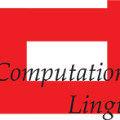Traditional approaches to semantic polarity in computational linguistics treat sentiment as a unidimensional scale, overlooking the multidimensional structure of language. This work introduces TOPol (Topic-Orientation POLarity), a semi-unsupervised framework for reconstructing and interpreting multidimensional narrative polarity fields under human-on-the-loop (HoTL) defined contextual boundaries (CBs). The framework embeds documents using a transformer-based large language model (tLLM), applies neighbor-tuned UMAP projection, and segments topics via Leiden partitioning. Given a CB between discourse regimes A and B, TOPol computes directional vectors between corresponding topic-boundary centroids, yielding a polarity field that quantifies fine-grained semantic displacement during regime shifts. This vectorial representation enables assessing CB quality and detecting polarity changes, guiding HoTL CB refinement. To interpret identified polarity vectors, the tLLM compares their extreme points and produces contrastive labels with estimated coverage. Robustness analyses show that only CB definitions (the main HoTL-tunable parameter) significantly affect results, confirming methodological stability. We evaluate TOPol on two corpora: (i) U.S. Central Bank speeches around a macroeconomic breakpoint, capturing non-affective semantic shifts, and (ii) Amazon product reviews across rating strata, where affective polarity aligns with NRC valence. Results demonstrate that TOPol consistently captures both affective and non-affective polarity transitions, providing a scalable, generalizable, and interpretable framework for context-sensitive multidimensional discourse analysis.
翻译:暂无翻译




